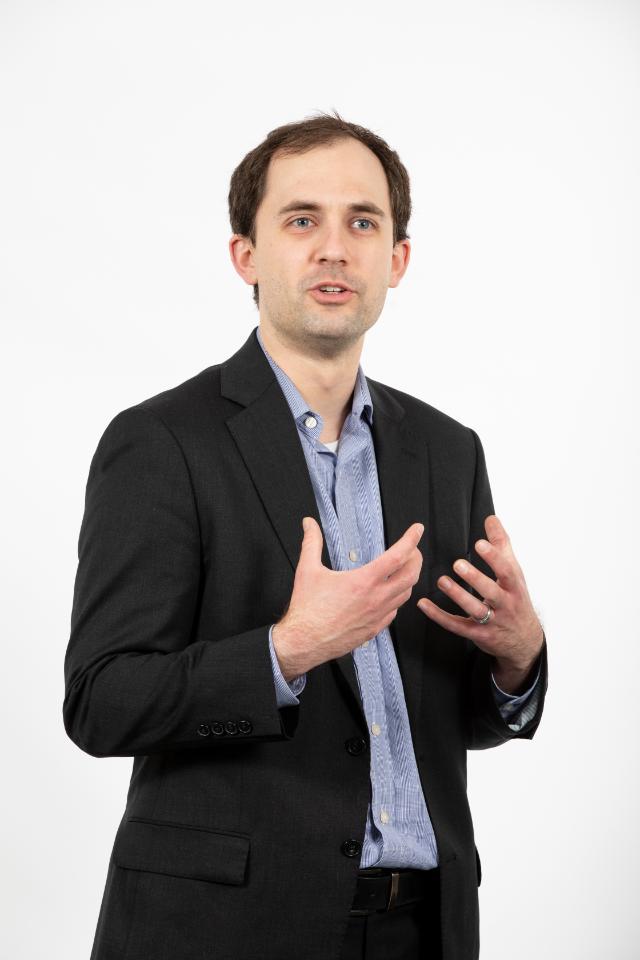
Where do captivating melodies come from? What about musical phrasing that can be so tense or haunting? Or beautiful harmonies that envelop and lift us up?
Dr. Mike Waddell, director of the Wind Symphony at Longwood, has gone straight to the source for the answers to these questions as they apply to classical music being written today.
He has interviewed and published a series of articles about living American composers, specifically those who have written for euphonium, Waddell’s primary instrument, or tuba, both of which are in the low brass family.
His articles dig into composers’ roots and inspiration. What music did they listen to growing up? Did they have formal musical training? How did composing become their primary focus?
Take Anthony O’Toole, whose works were featured at a joint concert of the Longwood Wind Symphony and Chamber Orchestra this spring and who visited campus to work directly with student musicians.
“He taught himself to read music about the same time he learned to read English. That had to change the way his brain worked,” said Waddell. “He can write a musical score like the rest of us can write a paragraph.”
Then there’s Benjamin Horn, whose family’s “obsession” with Michael Jackson filled his young mind with “Billie Jean,” “Bad” and “Beat It” instead of Brahms and Beethoven. “To hear that influence seeping into his music makes it really fresh and interesting,” said Waddell, who soon will have to his credit 12 articles published in ITEA Journal (International Tuba and Euphonium Association), three of which are theoretical analyses of individual compositions.
He brings what he’s learned from this research into his classes, particularly Music Entrepreneurship.
“Part of that class is learning how to make money being a musician,” said Waddell. “We’ve been able to look at the people I’ve interviewed and use them as real examples.”
Waddell himself serves as a real example of that. In addition to his teaching, he performs as a soloist and with chamber ensembles, and he has recorded two albums with the Keystone Quartet, a tuba-euphonium ensemble.

